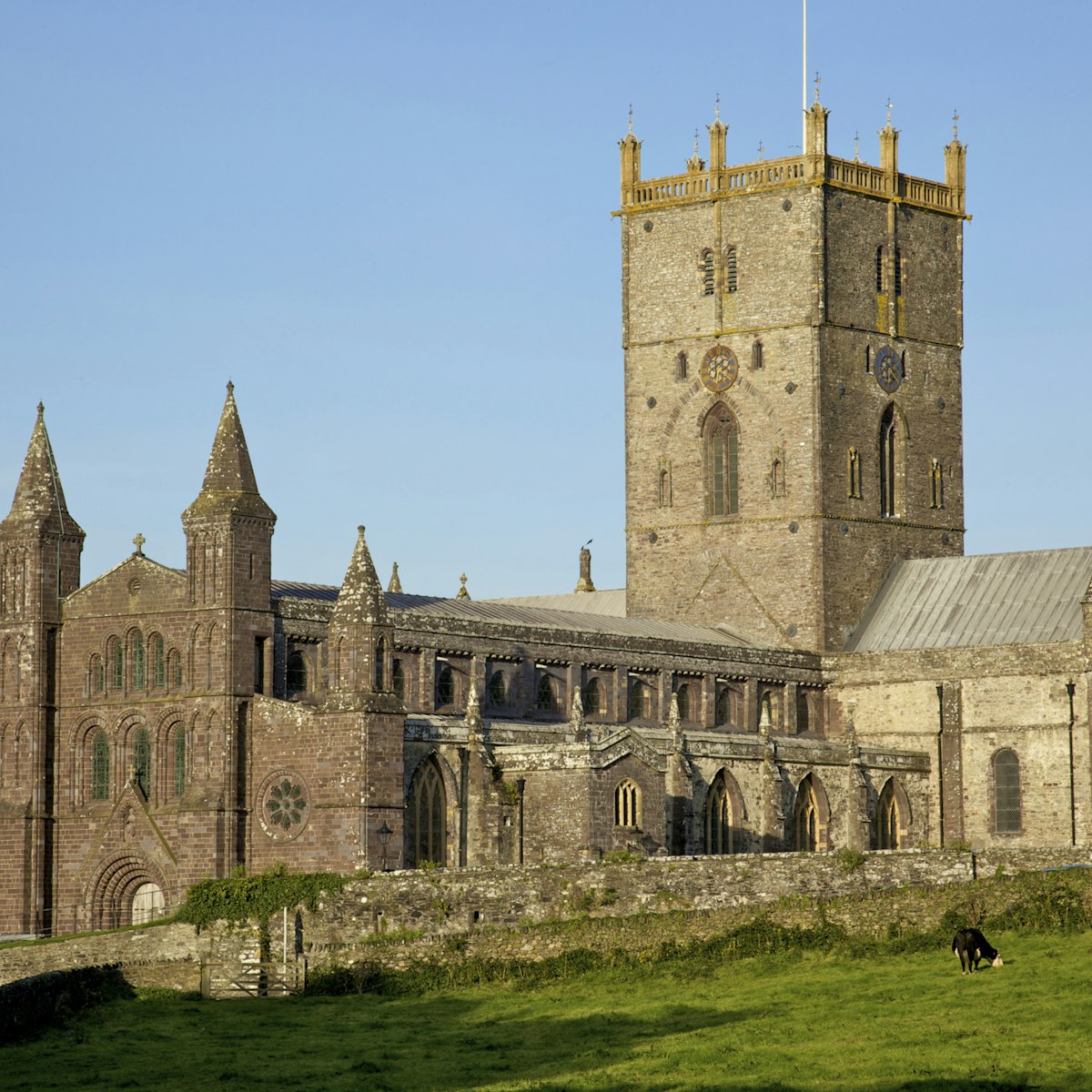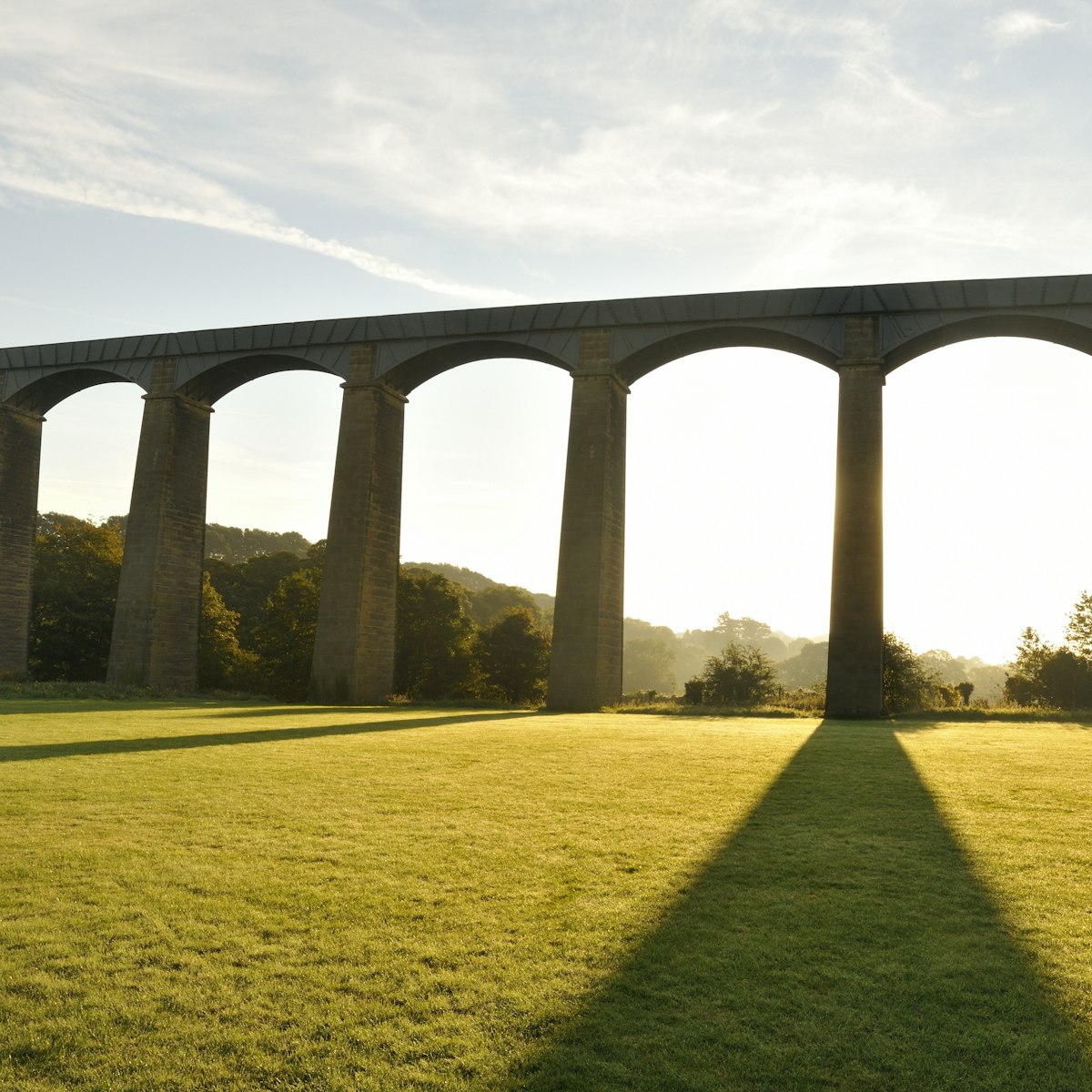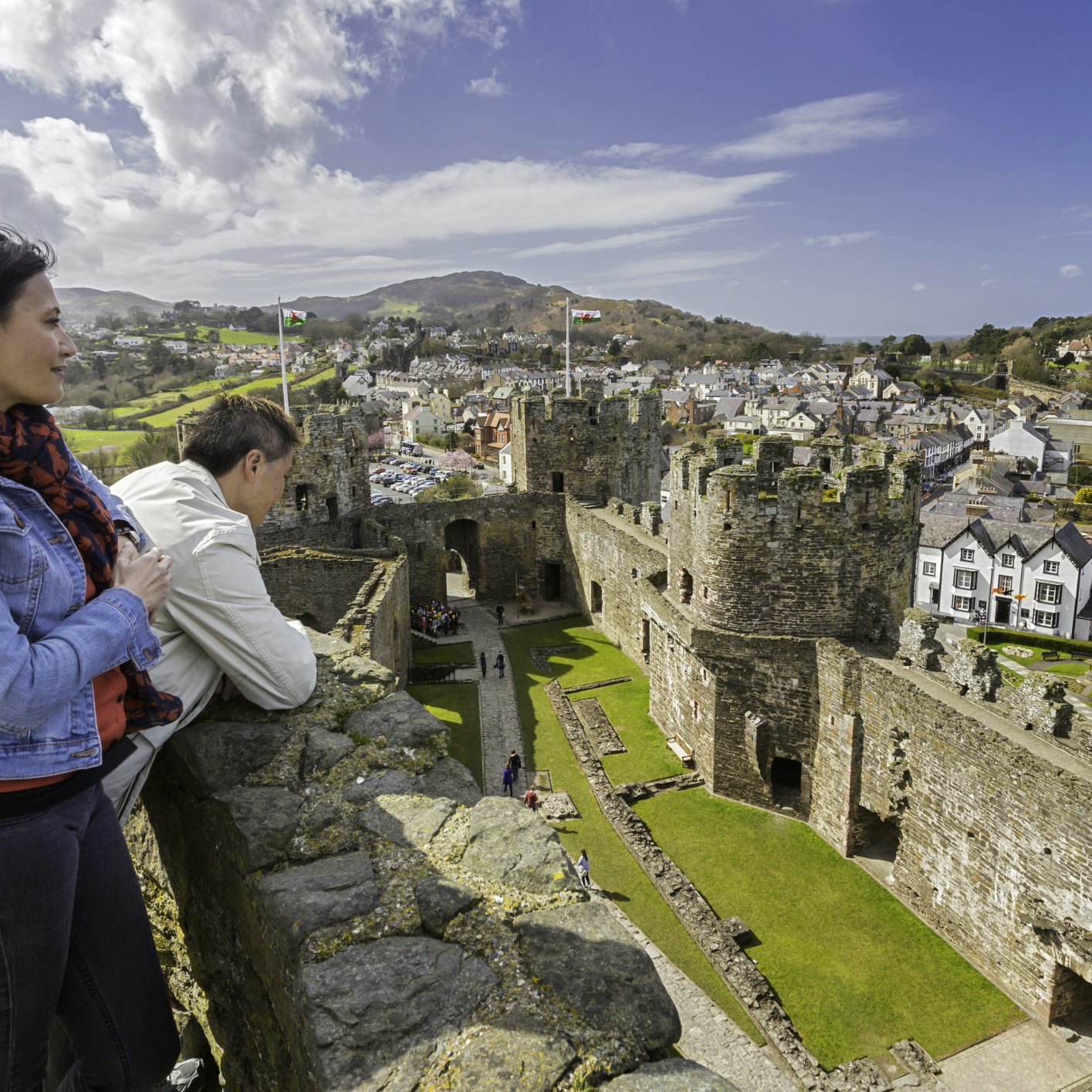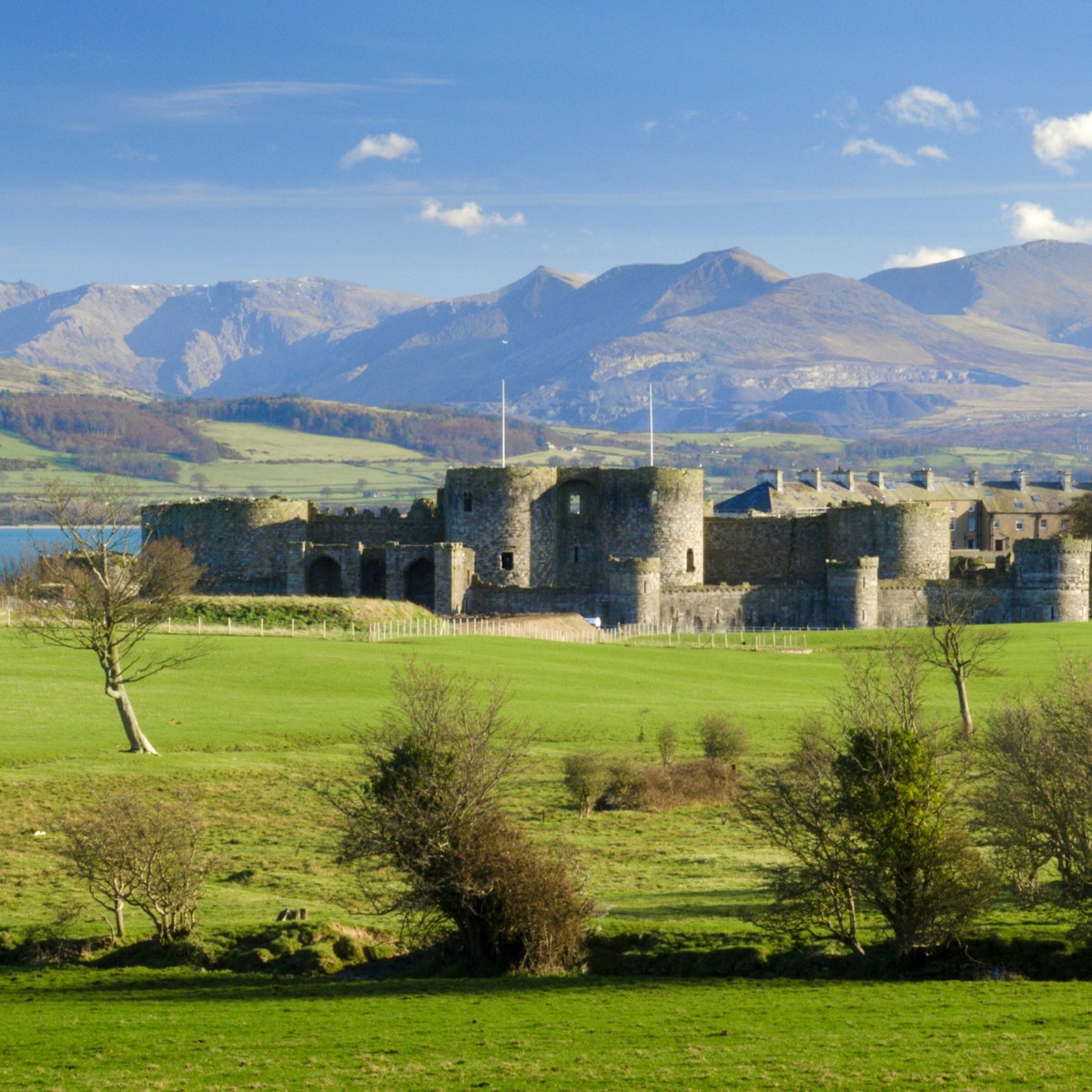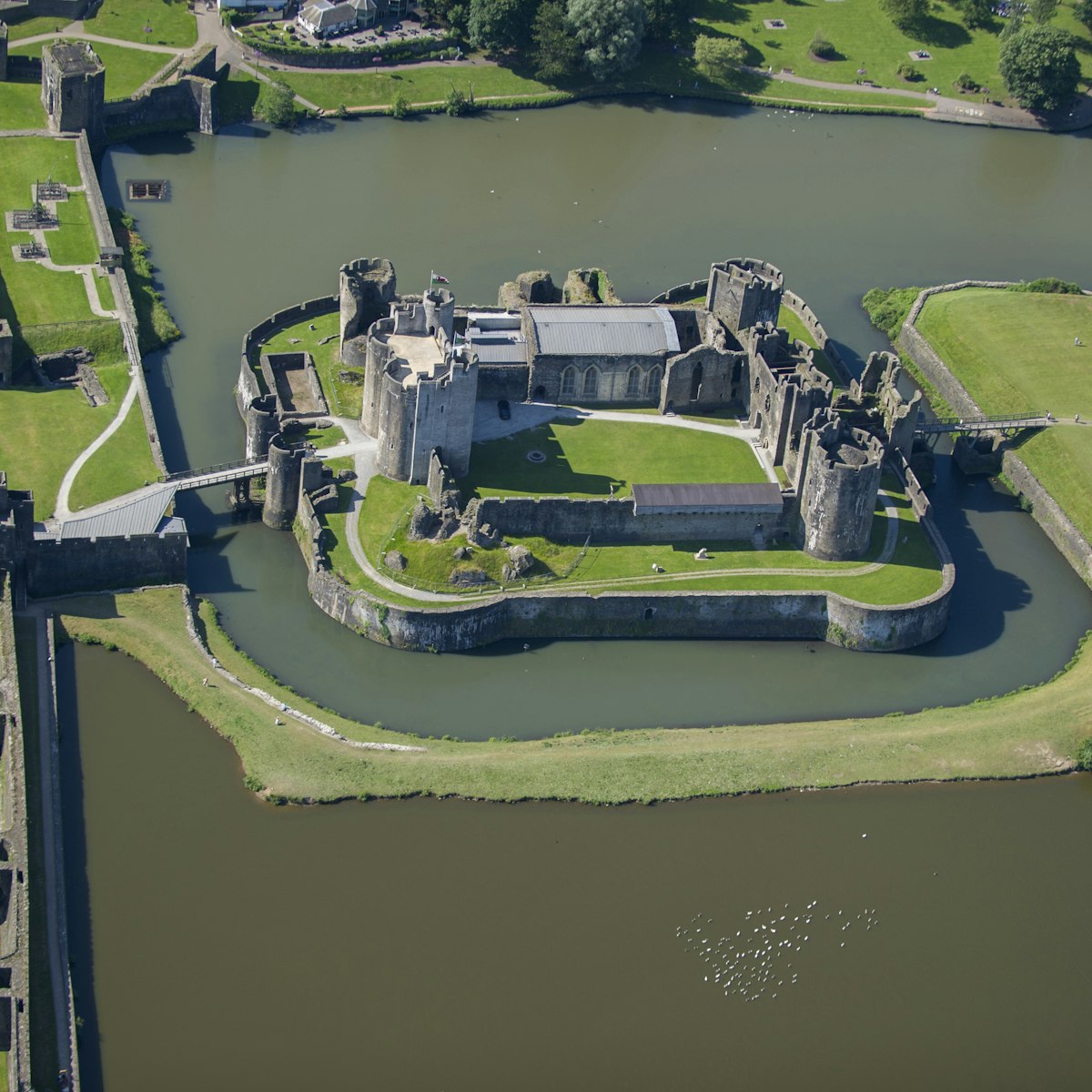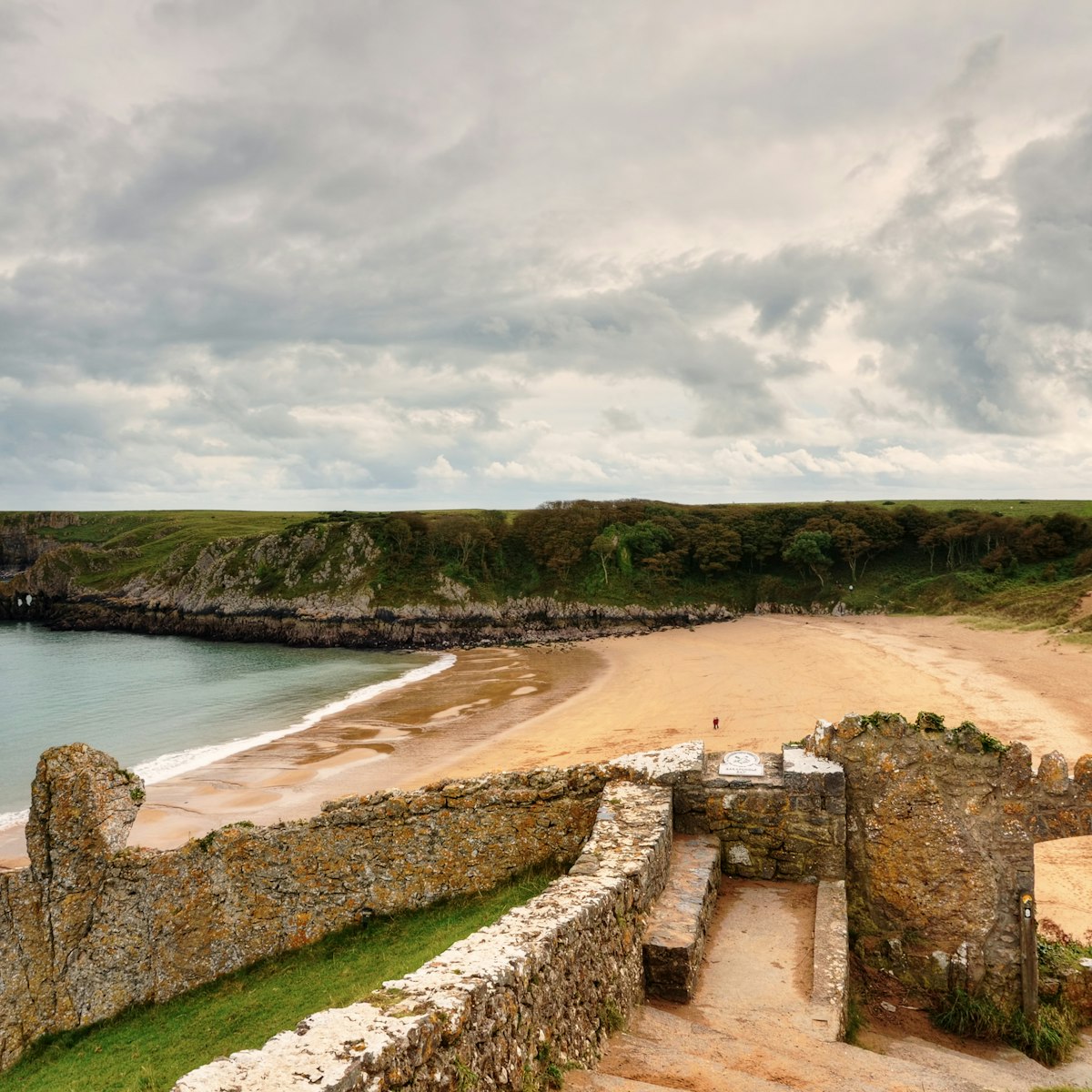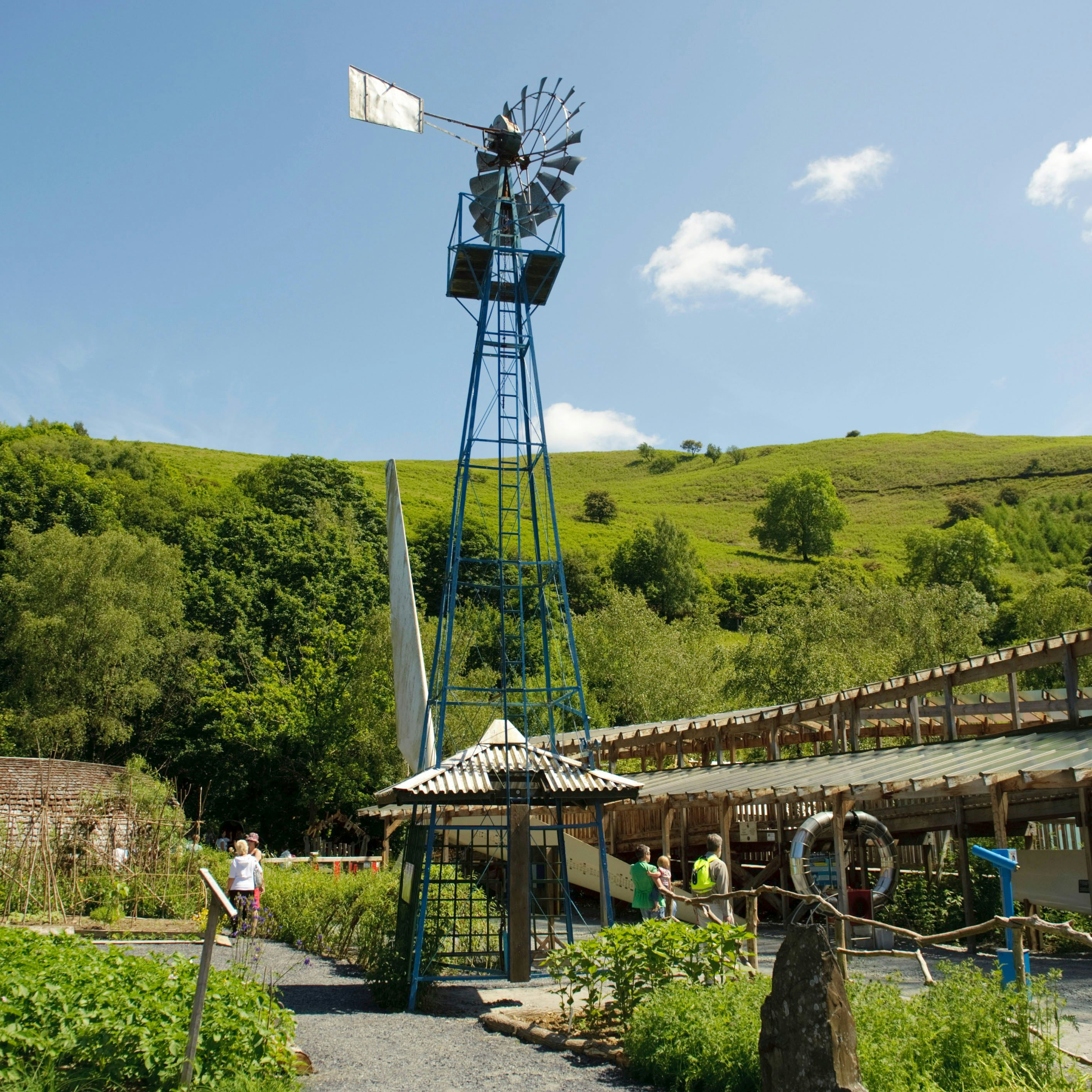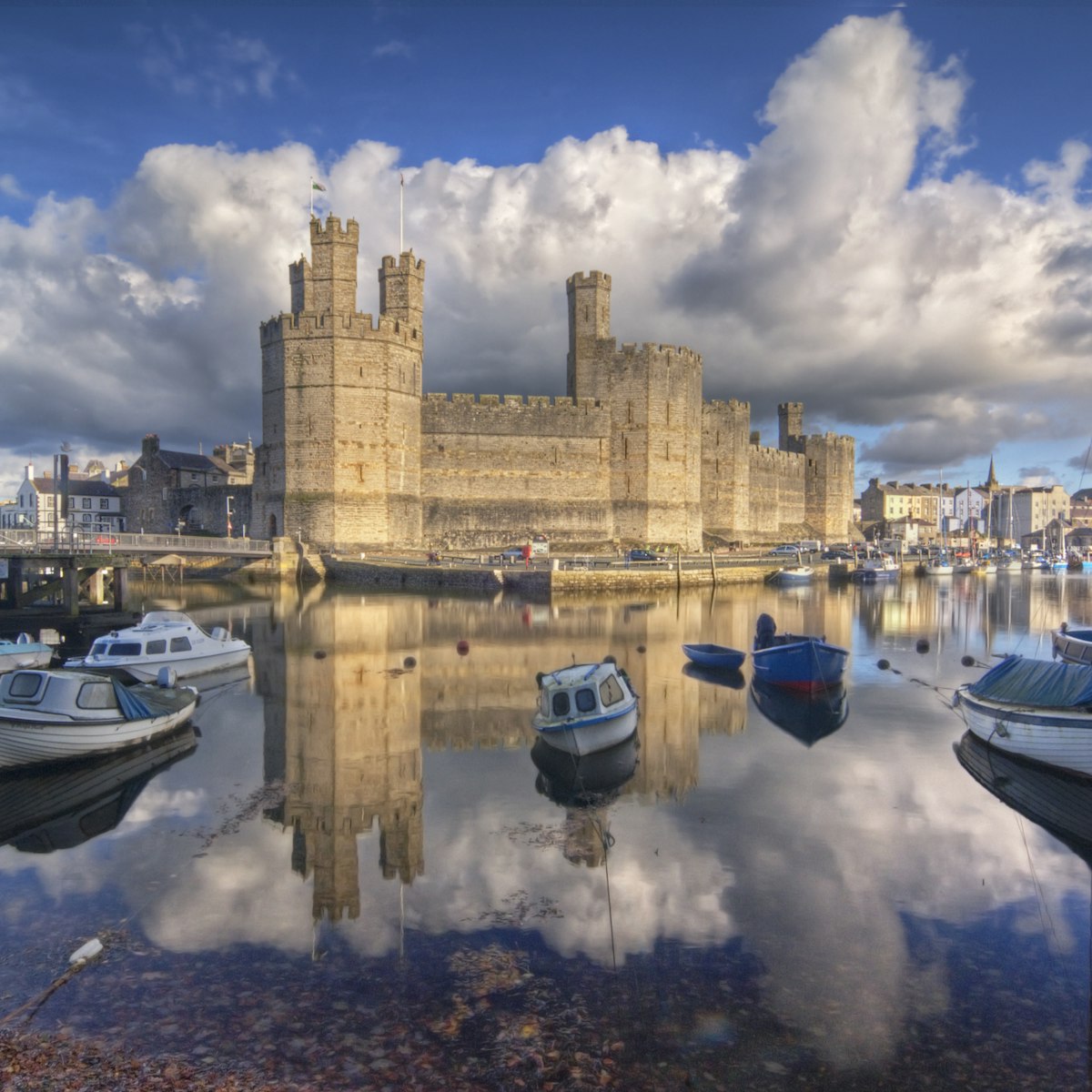
Majestic Caernarfon Castle was built by Edward I between 1283 and 1330 as a military stronghold, seat of government and royal palace. Designed and mainly supervised by Master James of St George, from Savoy, its brief and scale were extraordinary. Today it remains one of the most complete and impressive castles in Britain – you can walk on and through the interconnected walls and towers gathered around the central green, most of which are well preserved but empty.
Inspired by the dream of Macsen Wledig recounted in the Mabinogion, Caernarfon echoes the 5th-century walls of Constantinople (İstanbul), with colour-banded masonry and polygonal towers, instead of the traditional round towers and turrets.
Despite its fairy-tale aspect it is thoroughly fortified, with a series of murder holes and a sophisticated arrangement of multiple arrow slits. It repelled Owain Glyndŵr's army in 1404 with a garrison of only 28 men, and resisted three sieges during the English Civil War before surrendering to Cromwell's army in 1646.
A year after construction began, Edward's second son was born here, becoming heir to the throne four months later when his elder brother died. To consolidate Edward junior's power he was made Prince of Wales in 1301, thus creating the tradition of English kings conferring that title on their heirs. As Edward II he came to a very nasty end, possibly via a red-hot poker; his much-eroded statue is over the King's Gate. However, the first investiture that actually took place here (rather than in London) was that of his namesake, Edward VIII, in 1911 (coincidentally, his reign was also cut short, albeit less violently).
Start your inspection at the Eagle Tower, the one with the flagpoles to the right of the entrance. On the turrets you can spot the weathered eagle from which it gets its name, alongside stone-helmeted figures intended to swell the garrison's apparent numbers (they're easier to spot from the quay).
There's a film tracing the history of the site since Roman times in the North East Tower, while in the Queen's Tower (named after Edward I's wife Eleanor) is the Regimental Museum of the Royal Welch Fusiliers, filled with medals, uniforms, weapons and historical displays.
 Publish for free
Publish for free

 zzdtravel
zzdtravel

